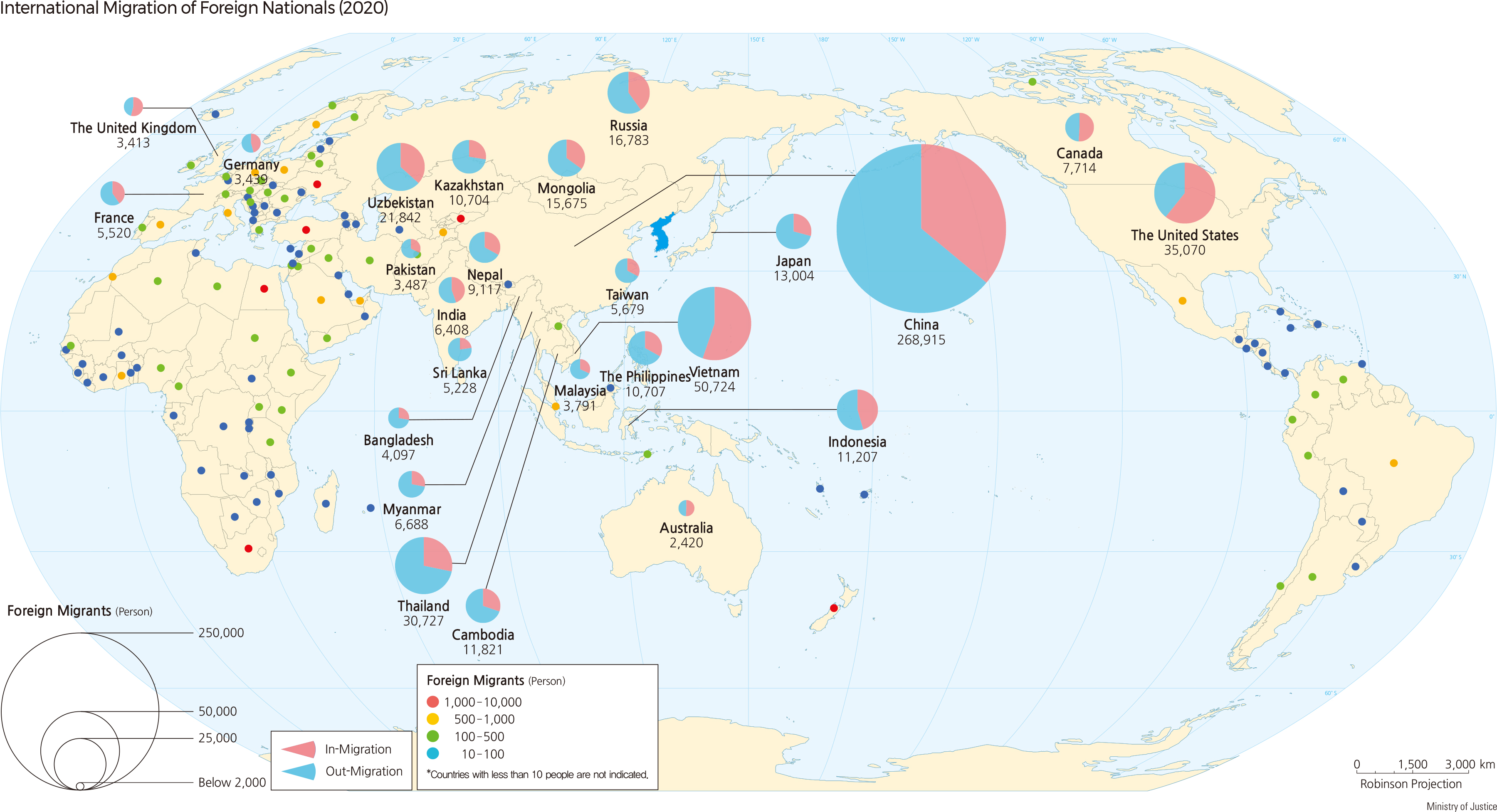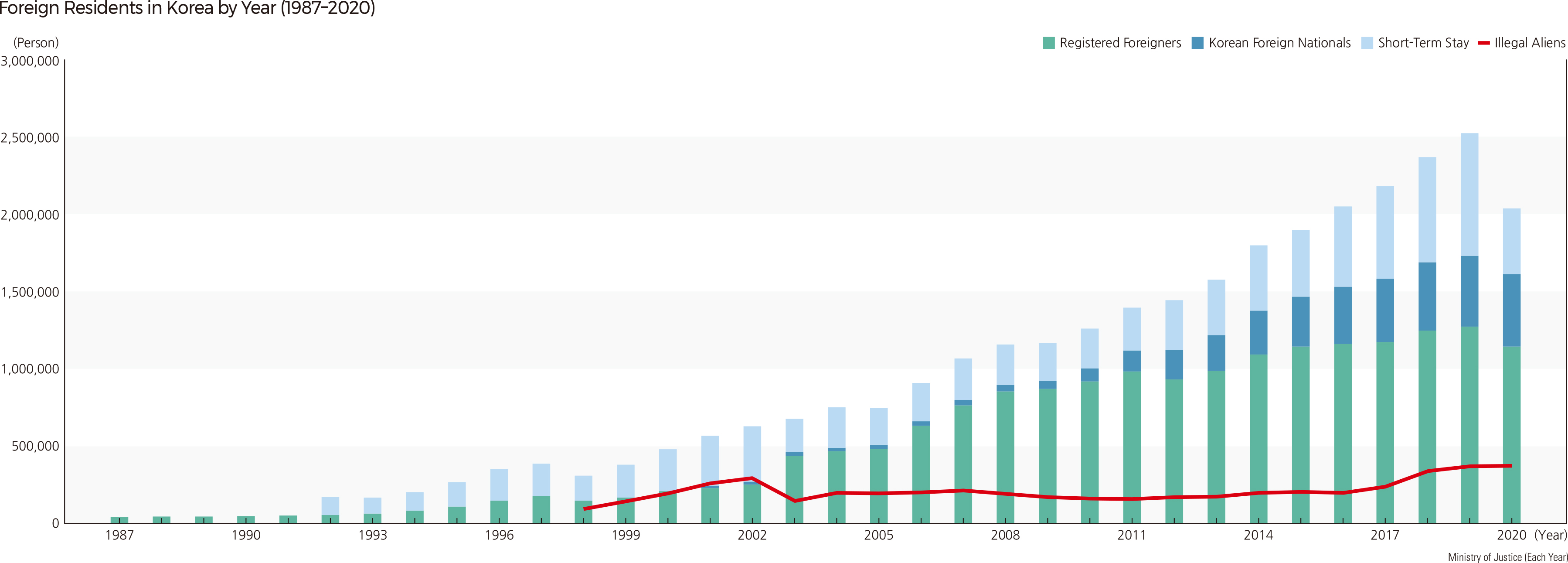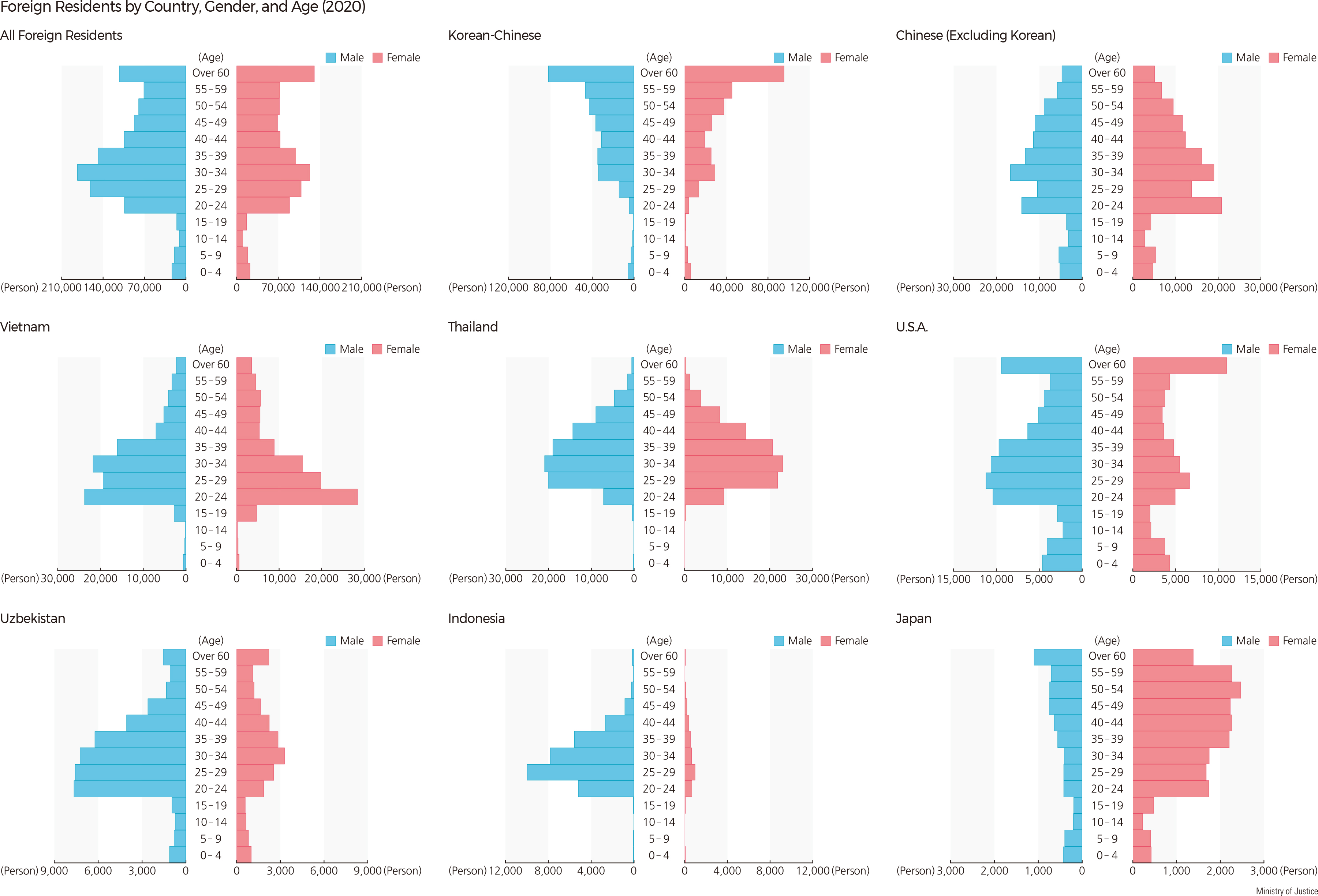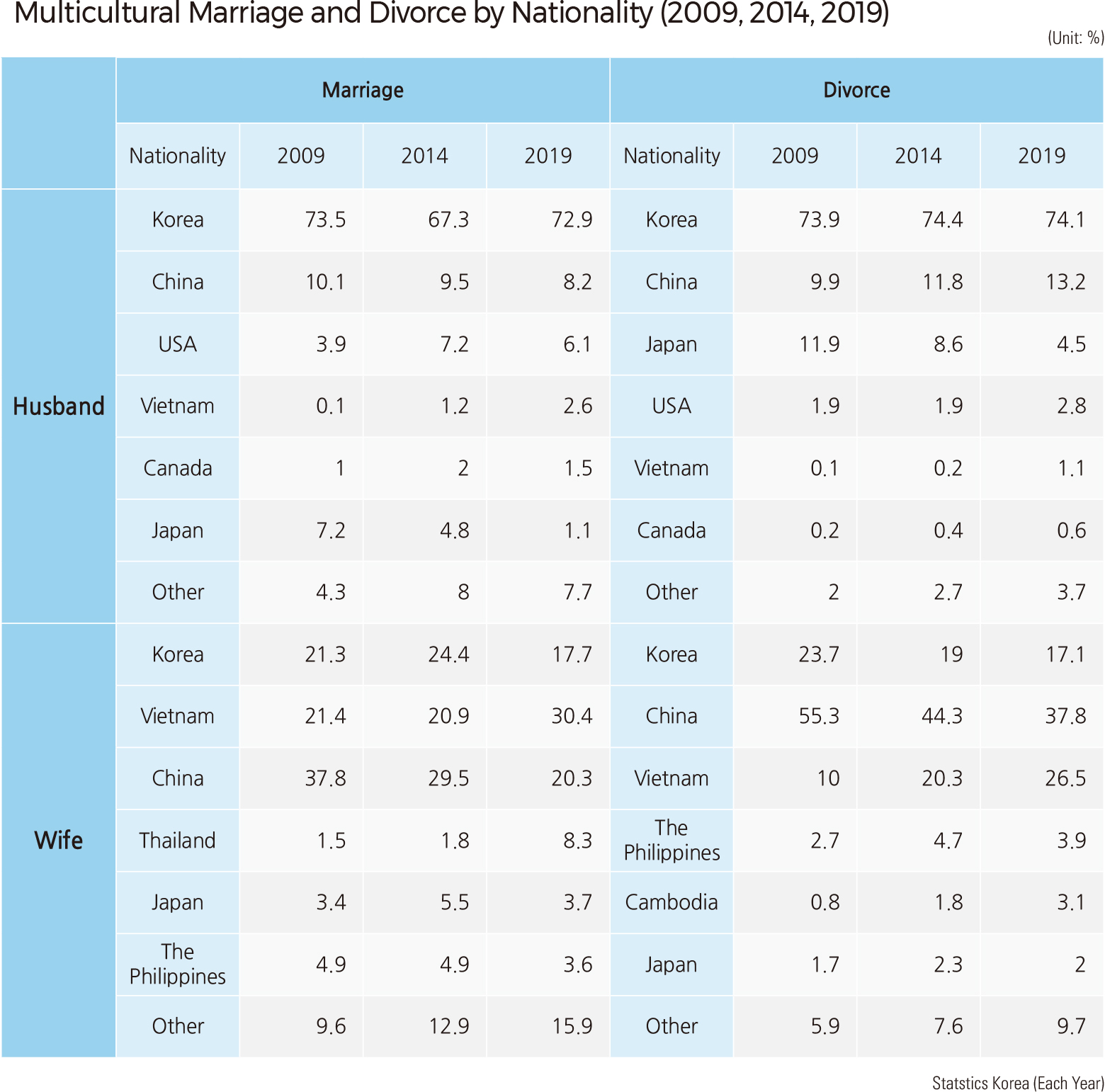English III 2021
The number of foreigners residing in Korea was around 40,000 until the 1980s but increased rapidly to a record-high 2.52 million in 2019. However, due to the impact of COVID-19 in 2020, the number of foreigners decreased by 480,000. As of December 2020, 2.04 million foreigners were staying in Korea. By nationality, the Chinese had the most with 900,000 (250,000 Chinese and 650,000 Korean Chinese), followed by 210,000 Vietnamese and 180,000 Thais. In 2020, the number of foreigners who left Korea was greater than those who entered Korea except for a few countries such as the United States and Vietnam as a result of COVID-19. In 2020, 230,000 foreigners entered Korea, and 360,000 foreigners left Korea, recording a net outflow of 130,000. The year 2020 recorded the highest net outflow of foreigners since 2000. In 2020, a total of 2.04 million foreigners resided in Korea: 1.13 million men and 910,000 women (sex ratio 102.7). By age, the proportion of foreigners aged 25-34 is high. However, the proportion of foreigners residing in Korea varies greatly by country, gender, and age. For example, among Chinese, Korean Chinese have more women than men, but non-Korean Chinese have more men than women. Also, most Korean Chinese are over the age of 50, while most non-Chinese are under the age of 50. African, Central Asian, and Southeast Asian countries have a high proportion of men, with the exception of a few countries such as Thailand. The United States also shows a similar pattern. A higher sex ratio of the Indonesian population in Korea is due to religious reasons. On the other hand, the proportion of female Japanese in Korea is overwhelmingly high. By the status of residence based on visa, foreigners living in Korea can be categorized as follows: Overseas Koreans (F-4), Non-professional (E-9), Visa Exempted (B-1), Permanent Resident (F-5), and Work and Visit (H-2). As of 2020, 390,000 illegal immigrants stayed in Korea after their visas expired. The rate of illegal immigrants was highest in the order of Visa Exempted (B-1), Short-Term General (C-3), and Tourist/Transit (B-2). In 2020, as the COVID-19 pandemic made it difficult for foreign workers to return to their home countries, the rate of illegal foreigners residing in Korea was 19.3%, the highest since 2008. |





